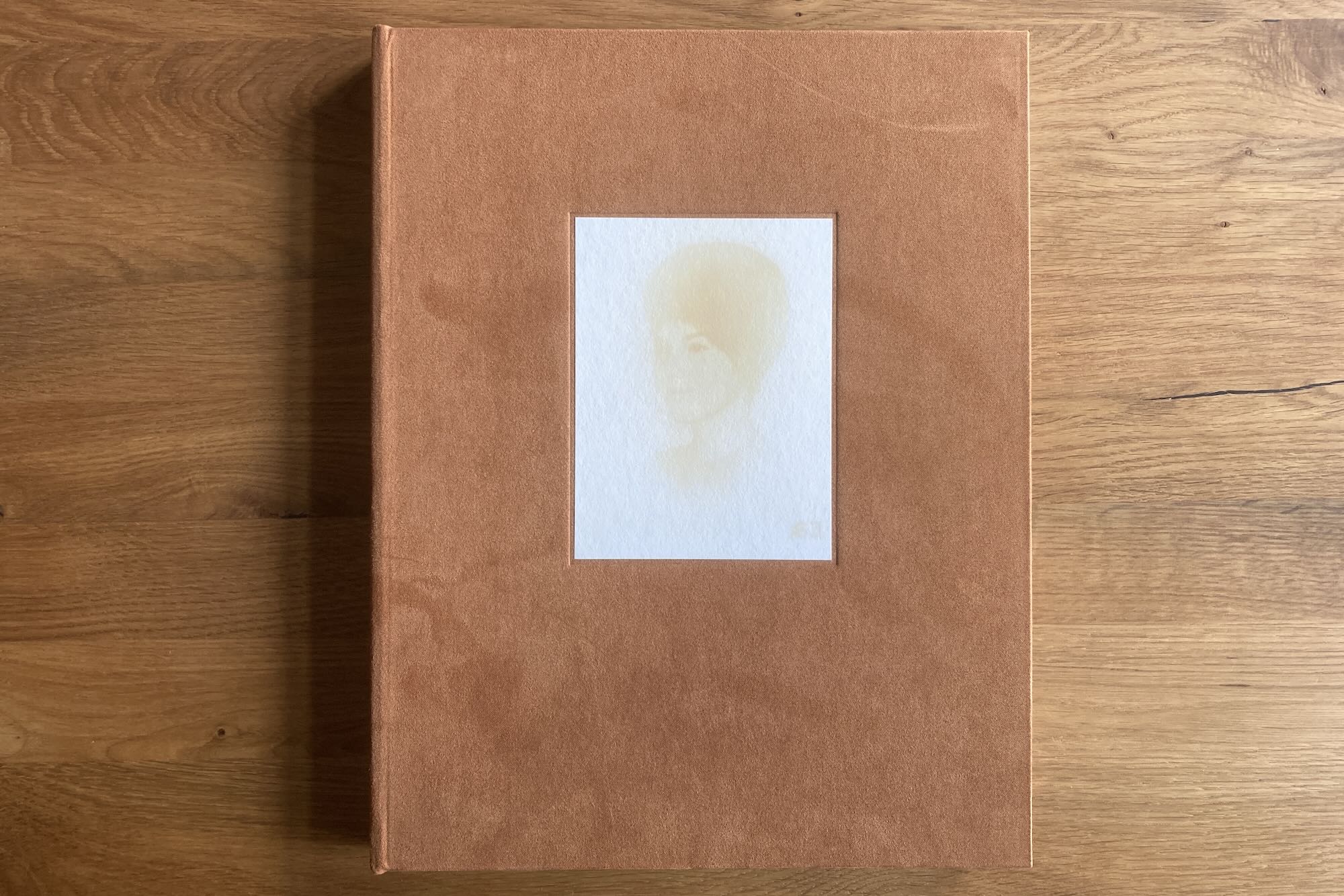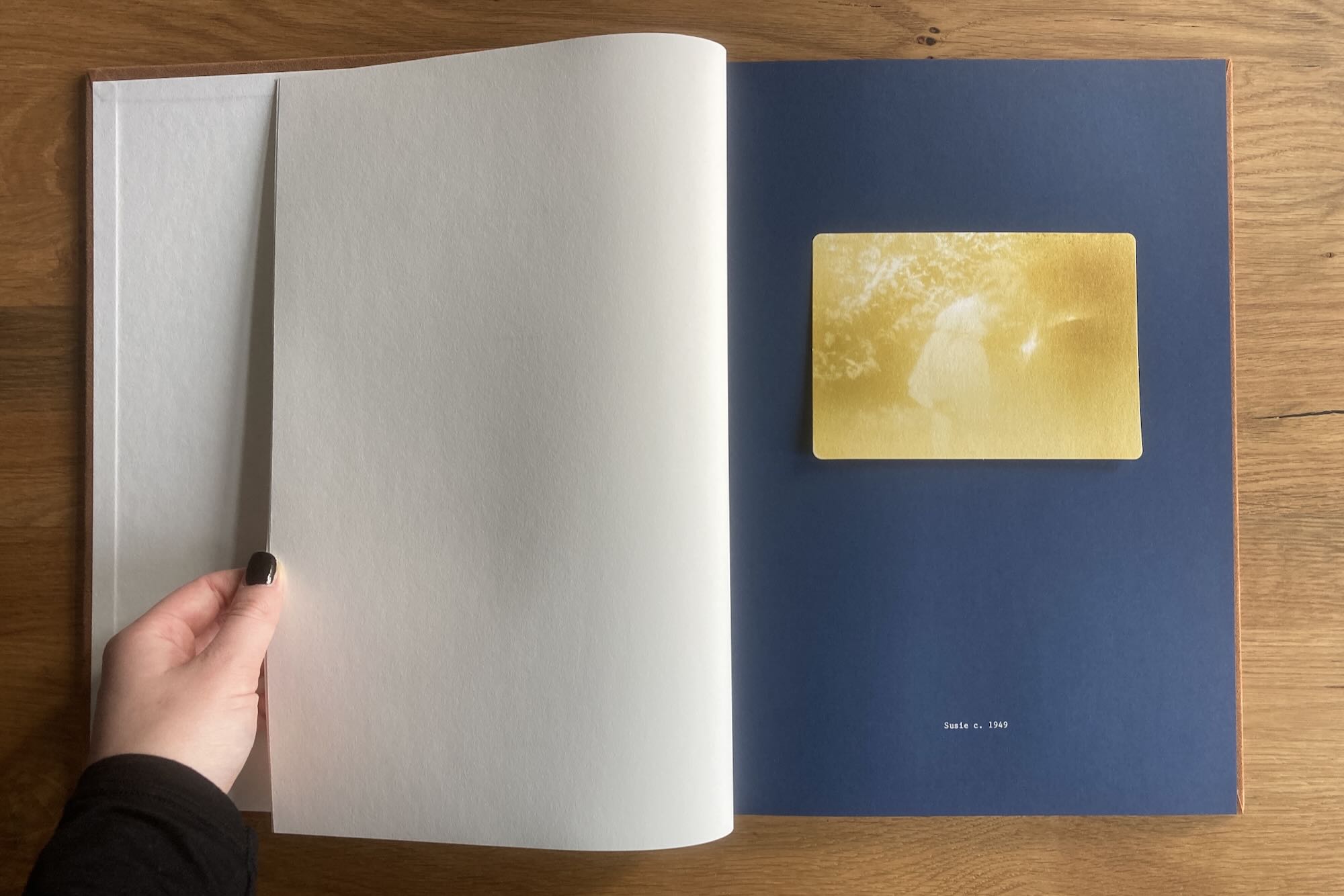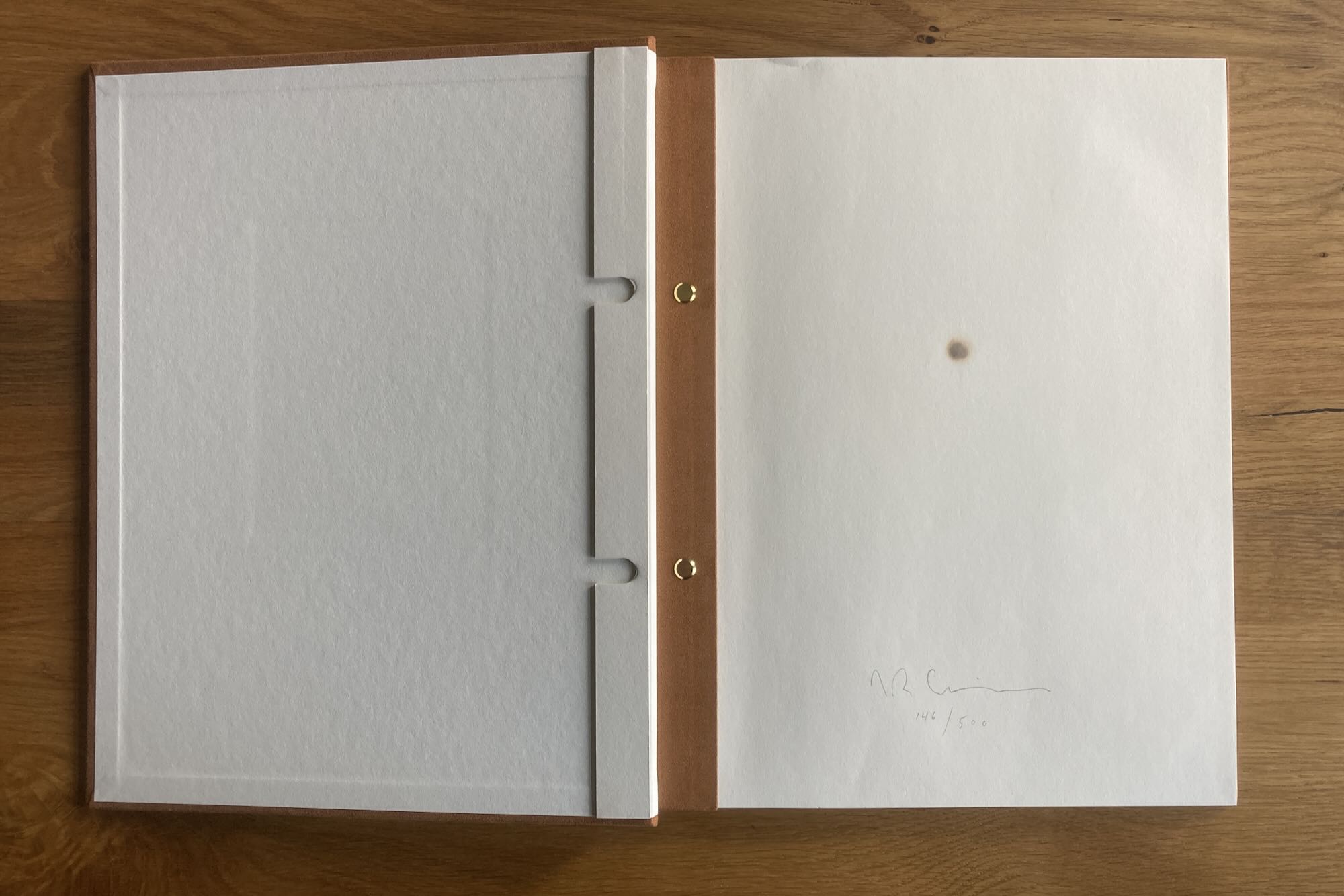
Photobook Reviews, Episode 14 – by Kate Schultze
Following the last review we’re gonna stay with the theme of motherhood and family. However, these two books couldn’t be more different. I was particularly excited to get my hands on this beautifully crafted object by TBW books. The production alone makes it feel so special, let alone the wonderful and touching surprise you find looking through it.

Publisher
TBW Books
Layout
33x25cm, hardcover, 50 pages, signed, numbered and burned
Price
86 €
Link
Nicotine, by multimedia artist TR Ericsson, is a deeply personal exploration of memory, loss, and transformation that is “considering the act of remembrance as a continuous even inexhaustible source of creativity and narrative possibility” says Zach Ritter on Brooklyn Rail. Ericsson passes nicotine through a halftone silkscreen to create imprints of family photographs – almost haunting echoes of the past preserved in smoke and stain. The book serves as both an elegy and an artifact, dedicated to his mother, Sue, a lifelong smoker who often sat up late, cigarette in hand. After her suicide in 2003, Ericsson confronted the nicotine-stained walls of her home, an experience that inspired this body of work.

Each of the 27 images (including the cover photo of his mother) recalls the meticulous nature of a scrapbook or a 19th-century scientific catalog. Or simply what it is, a family photo album. The process itself becomes ritualistic: burning images into existence with the same chemicals that was once an essential in his mothers life. Rather than fading, these photographs emerge – rising from the ashes, demanding remembrance. Each book is hand-numbered and uniquely marked-singed with a lit cigarette, a final gesture that turns each edition into a singular tribute to impermanence and grief.

The book is brought together into a richly textured and deeply poetic work about love, pain, longing, and hope – showing how memory can both bring these feelings to us and lead us astray. Ericsson’s images are beautiful and mysterious, drawing us in with their quiet, almost haunting presence. They capture the feeling of time slipping away – not just as a concept, but as something we can almost touch. His work balances deeply personal meaning with a story that feels universal, showing us not just how memory feels, but how it can take shape before our eyes. In revisiting the past, he reminds us that remembering is also a way of reshaping the present.



